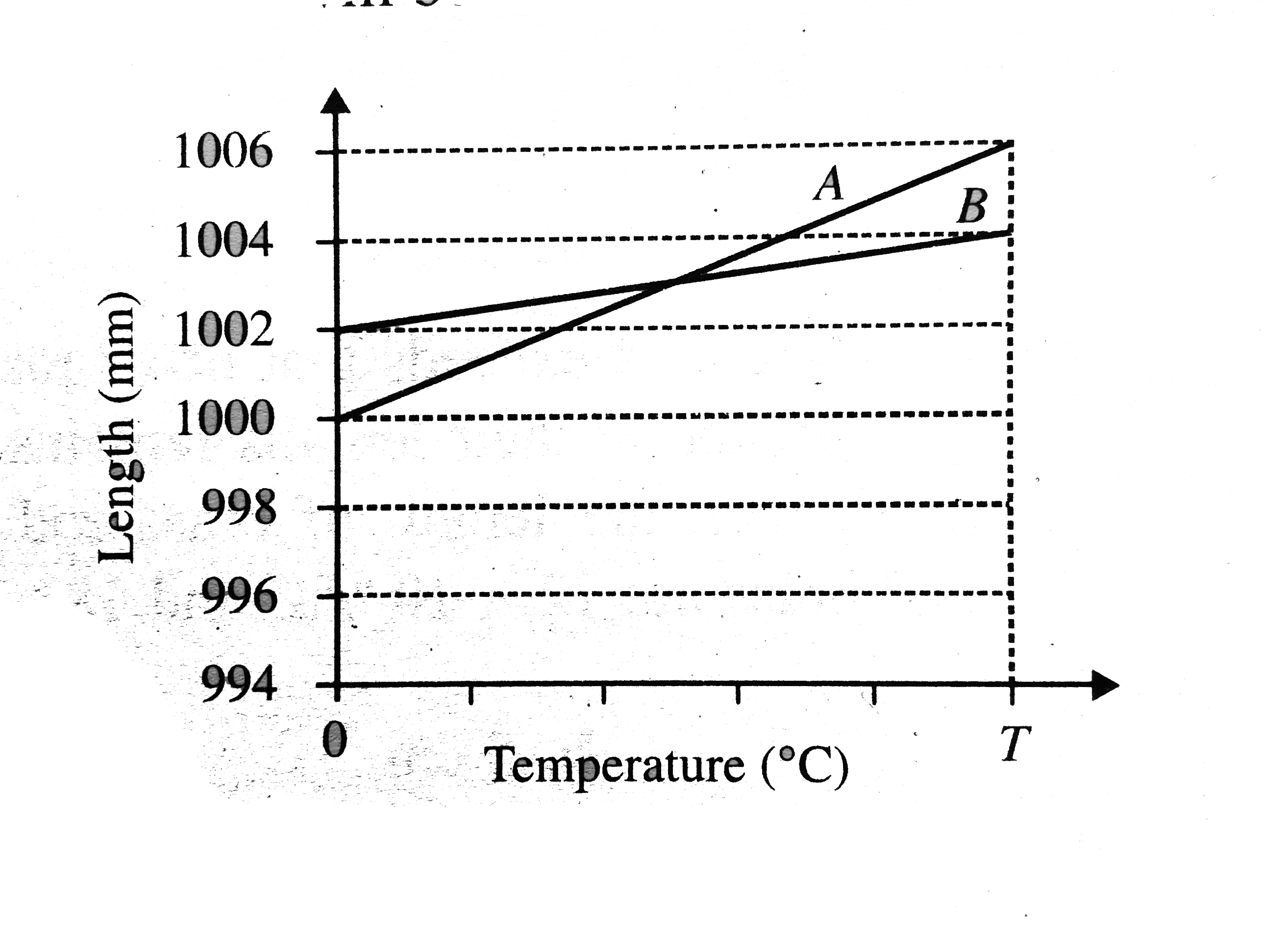Coefficient of linear expansion always ____ with the increase in temperature.
increases
decreases
remains the same
doubles itself
The correct Answer is:C
To answer the question "Coefficient of linear expansion always ____ with the increase in temperature," we can analyze the definition and behavior of the coefficient of linear expansion.
1. Understanding the Coefficient of Linear Expansion:
- The coefficient of linear expansion (α) is defined as the change in length per unit length of a material for a temperature change of 1 degree Celsius. Mathematically, it is expressed as:
α=ΔL/L0ΔT
where ΔL is the change in length, L0 is the original length, and ΔT is the change in temperature.
2. Behavior with Temperature:
- The coefficient of linear expansion is generally considered a constant for a given material over a small temperature range. This means that for small changes in temperature, the value of α does not change significantly.
3. Temperature Dependence:
- However, it is important to note that for larger temperature ranges, the coefficient of linear expansion can vary. For many materials, as temperature increases, the coefficient of linear expansion may increase slightly, but it is not a strict rule.
4. Conclusion:
- For most practical purposes and within a limited temperature range, the coefficient of linear expansion remains constant. Therefore, the correct answer to the question is that the coefficient of linear expansion always remains the same with the increase in temperature.
Final Answer:
The coefficient of linear expansion always remains the same with the increase in temperature.
- The coefficient of linear expansion (α) is defined as the change in length per unit length of a material for a temperature change of 1 degree Celsius. Mathematically, it is expressed as:
α=ΔL/L0ΔT
where ΔL is the change in length, L0 is the original length, and ΔT is the change in temperature.
- The coefficient of linear expansion is generally considered a constant for a given material over a small temperature range. This means that for small changes in temperature, the value of α does not change significantly.
- However, it is important to note that for larger temperature ranges, the coefficient of linear expansion can vary. For many materials, as temperature increases, the coefficient of linear expansion may increase slightly, but it is not a strict rule.
- For most practical purposes and within a limited temperature range, the coefficient of linear expansion remains constant. Therefore, the correct answer to the question is that the coefficient of linear expansion always remains the same with the increase in temperature.
The coefficient of linear expansion always remains the same with the increase in temperature.
Topper's Solved these Questions
- HEATBOOK - MCGROW HILL PUBLICATIONCHAPTER - HEATEXERCISE - HIGHER ORDER THINKING QUESTIONS
15 Videos
- GRAVITATION BOOK - MCGROW HILL PUBLICATIONCHAPTER - GRAVITATION EXERCISE - HIGHER ORDER THINKING QUESTIONS
25 Videos
- HEATING AND MAGNETIC EFFECTS OF CURRENT BOOK - MCGROW HILL PUBLICATIONCHAPTER - HEATING AND MAGNETIC EFFECTS OF CURRENT EXERCISE - HIGHER ORDER THINKING QUESTIONS
34 Videos
Similar Questions

The rectangular plate shown if Fig. 1.7 has an area Ai. If the temperature increases by ΔT, each dimension increases according to ΔL=αLΔT, where α is the average coefficient of linear expansion. Show that the increase in area is ΔA=2αAiΔT. What approzimation does this expansion assume?
View SolutionThe fundamental frequency of an organ pipe is independent of small variation in temperature. The coefficient of linear expansion of the material is α. The temperature of the tube at this instant is Nα. The value of N is ………
View Solution
Knowledge Check
Coefficient of linear expansion laways …….. With the increase in temperature
AincreaseBdecreaseCremainsDdoubles itselfA rod of length l and coefficient of linear expansion α. Find increase in length when temperature changes from T to T+ ΔT
AlαΔTBl(1+αΔT)Cl(1+2αΔT)Dnone of theseA rod of length l and coefficient of linear expansion α. Find increase in length when temperature changes from T to T+ ΔT
AlαΔTBl(1+αΔT)Cl(1+2αΔT)Dnone of these
Imagine a hypothetical material whose average temperature coefficient of linear expansion is 0.1/.∘C .Find the fractional increase in area of thin square plate of above material when temperature is increase by 10∘C
View SolutionRelate the terhmal coefficient of linear expansion, α, the the thermal coefficient of area expansion β.
View Solution
The variation of length of two metal rods A and B with change in temperature is shown in Fig. the coefficient of linear expansion αA for the metal A and the temperature T will be
View SolutionThe unit of coefficient of linear expansion is
View SolutionThe diameter of a metal ring is D and the coefficient of linear expansion is α. If the temperature of the ring is increased by 10C, the circumference and the area of the ring will increases by
View Solution
